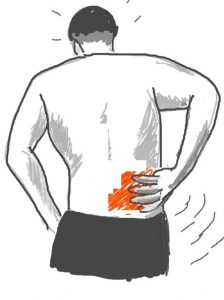July 15th 2018, Dr Chee L Khoo
Have you noticed that an increasing n umber of patients with renal stones discharged from emergency department are prescribed tamsulosin. It makes perfect sense, doesn’t it? Tamsulosin is an alpha blocker and by inhibiting the smooth muscles in the ureter, it facilitates the passage of stone into the bladder. Does it really? It’s logical but is there evidence that it works?
umber of patients with renal stones discharged from emergency department are prescribed tamsulosin. It makes perfect sense, doesn’t it? Tamsulosin is an alpha blocker and by inhibiting the smooth muscles in the ureter, it facilitates the passage of stone into the bladder. Does it really? It’s logical but is there evidence that it works?
Current North American and European management guidelines support the use of the α-blocker tamsulosin as medical expulsive therapy. This came from rigorous systematic review and meta-analysis demonstrating its effectiveness mainly for larger stones but not smaller stones because the latter have a high likelihood of passage without any intervention 2-5. However, three recent large clinical trials have thrown into question current guidelines. The latest was published in Journal of the American Medical Association (JAMA) last week.
The aptly named Study of Tamsulosin for Urolithiasis in the Emergency Department (STONE) is a double-blind placebo controlled clinical trial conducted in two stages – phase 1 in a single site and phase across 6 emergency department sites1.
Adults > 18 years old presenting to ED with a symptomatic urinary stone < 9mm in diameter (as confirmed on CT) located in the ureter were eligible. Participants were randomised to either 400mcg tamsulosin daily or placebo. They were contacted by phone at 2, 7, 15, 20, 29 and 90 days after randomisation. A repeat CT was performed at 28 days to determined whether the stone was passed. Participants who underwent surgery was considered “treatment failures”.
So, did tamsulosin facilitated the passage of small ureteric stones?
A total of 512 participants were randomised. At the end of the 28 day period, 49.6% of patients on Tamsulosin had passed their stones. In those on placebo, 47.3% passed their stones (p = 0.60) which is statistically not significant. After adjusting for age, the results were also not significant. No serious adverse events were recorded although patients on tamsulosin had more ejaculatory dysfunction. There were also no statistical difference between the two groups in proportion of patients returned to work, rate of surgery, hospitalisation or return to ED. Neither were there any difference between the groups on time to stone passage or length of time patient required analgesia.
Medical expulsion therapy for ureteric stone in the emergency department setting is increasingly common. Treatment guidelines were based on meta-analysis but meta-analysis may have limitations as studies are often “merged” to increase sample size. However, not uncommonly studies included may not be homogenous.
The results from this study is consistent with two recent large clinical trials. In the UK Spontaneous Urinary Stone Passage Enabled by Drugs (SUSPEND), 1167 patients with ureteric stones < 10mm in diameter were randomised to either tamsulosin, placebo or nifedipine6. There were no difference between the groups in the proportion of patients required further treatment by 4 weeks.
In a recent Australian study, 403 patients with ureteric stone < 10mm in diameter were randomised to either tamsulosin or placebo7. Again, there were no difference between the groups in the overall rate of passage of stones at 28 days.
Tamsulosin did facilitate passage of stone >5mm in both the UK and Australian studies.
This study (and the two previous two studies in UK and Australia) has thrown into question the role of tamsulosin in medical expulsive therapy. Treatment guidelines will need to be revised or refined.
Access the abstract here.
Reference:
- Andrew C Meltzer, Pamela Katzen Burrows, Allan B WOlfson et al. Effect of Tamsulosin on Passage of Symptomatic Ureteral Stones. A Randomixzed Clinical Trial. JAMA Intern Med. Published online June 18, 2018
- Wang RC. Managing urolithiasis. Ann Emerg Med. 2016;67(4):449-454.
- Scales CD Jr, Bergman J, Carter S, Jack G, Saigal CS, Litwin MS; NIDDK Urologic Diseases in America Project. Quality of acute care for patients with urinary stones in the United States. Urology. 2015; 86(5):914-921.
- Ganesan V, Loftus CJ, Hinck B, et al. Clinical predictors of 30-day emergency department revisits for patients with ureteral stones.J Urol. 2016;196(5):1467-1470.
- Skolarikos A, Ghani KR, Seitz C, Van Asseldonk B, Bultitude MF. Medical expulsive therapy in urolithiasis: a review of the quality of the current evidence. Eur Urol Focus. 2017;3(1):27-45.
- Pickard R, Starr K, MacLennan G, et al. Medical expulsive therapy in adults with ureteric colic: a multicentre, randomised, placebo-controlled trial. Lancet. 2015;386(9991):341-349
- Furyk JS, Chu K, Banks C, et al. Distal ureteric stones and tamsulosin: a double-blind, placebo-controlled, randomized, multicenter trial. Ann Emerg Med. 2016;67(1):86-95.e2
